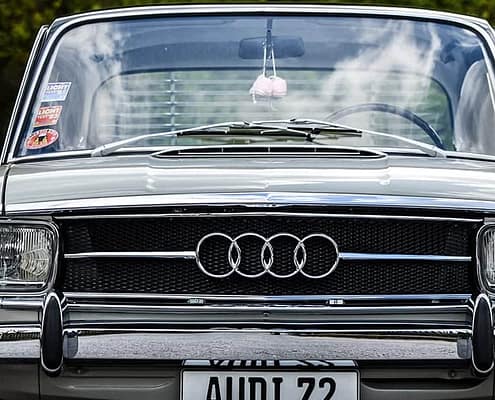Application Questions
Questions about how to apply the paint

My touch up paint job does not look very smooth. What can I do?
Please read our detailed instructions for an in-depth explanation of how to get a smooth finish.
The first thing to keep in mind is that you are applying paint with an applicator, as opposed to spraying. So it won’t go on as smooth as a spray coat, but we can address the smoothness later, when it dries. As you apply the paint to your chip or scratch, try to keep it as even as possible with gentle strokes of the applicator.
The second thing to keep in mind is that the “invisible-ness” of your repair is a function of two things: 1) color match; and 2) creating a level final surface so that reflected light does not get distorted by a chip or scratch that is lower or higher than the surrounding paint. Often, customers will put one coat of touch up paint in a deep scratch, and it will match the surrounding paint color, but it won’t fill in the scratch. So the scratch or chip is catching the reflected light and remains noticeable. You will need to either use primer as your first coat to fill in a deep blemish, or use multiple coats of paint to fill in. You always want to achieve a final application that is slightly higher than the surrounding paint, because the next step is to polish it down (level it). Use the included polishing compound and microfiber cloth to level the repair and match the height of the surrounding finish.

This step also removes the inevitable extra paint around the blemish that results from your efforts to smooth it out. Take your time when polishing with the compound; you want to apply heavier pressure with one finger in the area where you want to remove the paint. Focus the pressure first on leveling the repair, then focus the pressure on any extra paint that is outside of the blemish. This is what polishing compound is designed to do, and you may notice your paint color staining the microfiber towel — that is normal and it means you are removing some paint. Don’t start out with super aggressive pressure; slowly build up the pressure as you watch the paint get slowly removed. Continue to add compound to the towel so you have a decent slurry of compound. The compound has tiny abrasive particles in it, so you need some liquid compound for it to work. If it gets too dry, add a little more.
If you remove the material properly and it levels out, you may still notice your scratch/chip isn’t fully filled in. Just put another coat of paint on, and repeat the process until you have a good repair. Then you will clear coat, and do one last polish to level that.

3960 South 500 West
Salt Lake City, UT
USA 84123
